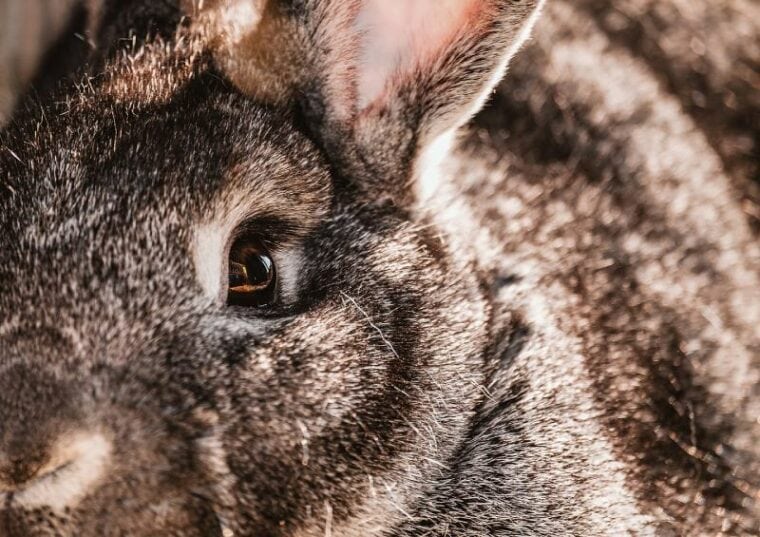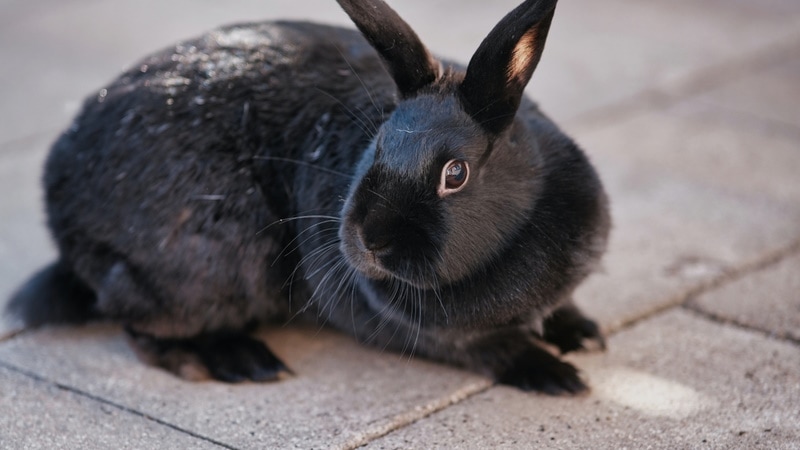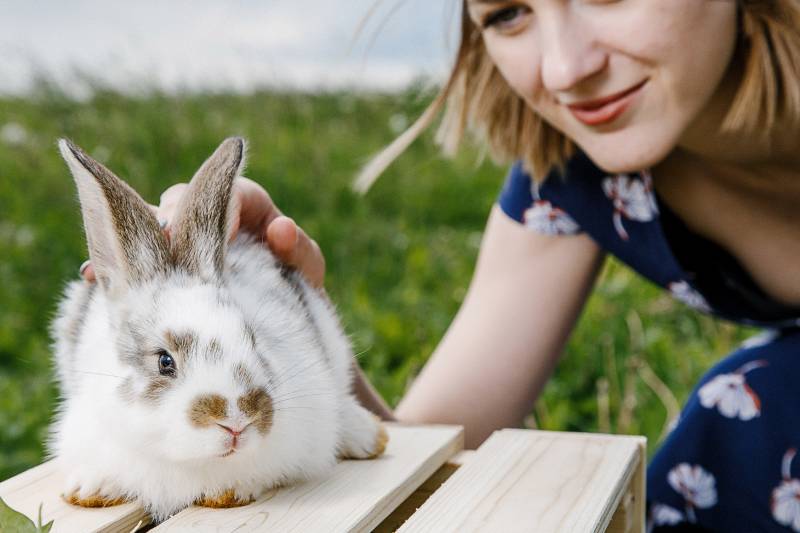
If you’re anything like us here at PetKeen, you have at some point no doubt sat and wondered what it must be like to see the world through your pet’s eyes. Though we can’t ever truly experience this, we can learn about how our fluffy, scaly, or multi-legged companions perceive their environments and how and why their vision has evolved to be the way it is.
Take rabbits, for example. In a nutshell, rabbits can see better in low light than humans can and have a great field of vision, but, in turn, they have trouble seeing fine details and can’t see what’s right in front of them. Moreover, their color-distinguishing skills are poor. Let’s explore why this is the case.
A Rabbit’s Vision Compared with a Human’s
As explained by Dana M. Krempels, Ph.D. of the University of Miami in her article “What Do Rabbits See?” (1998), while humans have evolved to have binocular-like vision and strong color and depth perception, a rabbit’s vision has evolved to help them detect predators no matter which angle they’re coming from 1.
This is why a rabbit’s eyes are positioned high and on the sides of their head rather than at the front like a human’s are. This position gives the rabbit a field of vision of almost 360 degrees and even allows them to see predators hovering high above them.
Unfortunately, this eye positioning means that, unlike humans, rabbits have a small “blind spot” under the mouth and cannot see what’s right in front of them. The lateral position of their eyes also means that rabbits have a small binocular field of vision, and their vision is primarily monocular, so they also have trouble with depth perception and can’t see in 3D like we can. The good news is that the rabbit’s sense of smell, vibrissae, and hearing have adapted to make up for this.
If you look at the placement of the nostrils, you’ll notice that they’re facing forward, which helps the rabbit pick up scents in front of them. The ears are not only large, but they can turn approximately 270 degrees, which helps them pick up where sounds are coming from better.

Can Rabbits See in the Dark & See in Color?
Rabbits see well in low light—better than humans, in fact—owing to the fact that their retinas contain a higher number of rods than cones. Rods and cones are the two types of photoreceptors (light sensitive cells) located in the retina. Rods are the photoreceptors that help an animal navigate in low light conditions and are sensitive to subtle movements. They don’t, however, allow an animal to see in total darkness, and the rabbit still sees a sort of grainy image in low light due to poor resolution.
On the other hand, the rabbit’s retina contains fewer cones, the photoreceptors that allow an animal to experience better color vision and see finer details. Cones are responsible for how clearly humans are able to see in daylight and our broad spectrum of color vision, something that developed so humans could find food, like fruit, more easily.
Humans have three cone types—blue, green, and red—which perceive light and allow us to see a wide spectrum of colors. By contrast, a rabbit’s color vision is limited to the ability to distinguish between blue and green, though the way they see these colors isn’t the same as how a human would see them.
Can My Rabbit See Me?
If you’ve ever wondered why your rabbit turns their head to the side and stares at you, it’s their way of trying to get a better look at you since there’s a blind spot in front of their face. But what do they actually see when they look at you? Your rabbit’s image of you will be grainy, but they can make out familiar body movements to help identify that it’s you.
For this reason, if your shape appears different than usual to them due to clothing or you are carrying something big, don’t be surprised if they freak out and hide. Rabbits also rely on their other senses to identify you, as they get used to the way you sound and your scent.

Conclusion
So, if you’ve ever felt baffled as to why your rabbit can’t seem to find something that you place right in front of them, like a toy or some food, or why they turn their head sideways to look at you, now you know! All that said, a rabbit’s vision is strong in other ways, particularly in how it has adapted to sense predators from various angles and even in low-light conditions.
See also:
Featured Image Credit: Couleur, Pixabay








